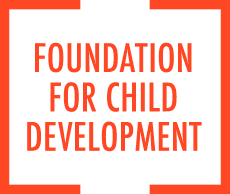https://www.fcd-us.org/early-learning-and-care-survey-results-school-districts-find-innovative-ways-to-expand-programs/
School districts in Washington state understand the importance of early education as a key strategy for closing the student achievement gap. In the absence of strong leadership from the state, the districts themselves are finding ways to provide pre-kindergarten programs and full-day kindergarten classes to a growing number of students. The Economic Opportunity Institute (EOI) undertook the first survey of the state’s 296 districts in order to document the extent of school district involvement in early education, identify promising models, and help shape policy decisions about moving toward universal preschool and full-day kindergarten.This report presents an overview of the survey’s findings.
Washington state school districts are embracing early childhood education as a strategy for helping all children succeed in school. Many of these efforts go well beyond what the state requires and funds under the legislature’s definition of basic education. Sixty-four percent of school districts are offering pre-kindergarten programs and 43% are providing kindergarten classes beyond state requirements. The investment in early learning is motivated by parent demand and by the commitment of school officials and community leaders to close the achievement gap in upper grades by making sure that all children begin school ready to learn.
School district involvement in early education is a statewide phenomenon. Districts on both sides of the Cascade mountains, in all corners of the state, of large and small enrollment, and in rural and urban environments are investing in early education. There is tremendous variety in early education programs. This variation reflects both the patchwork of funding and other available resources and the efforts of districts to be responsive to the needs of their communities.
Funding makes a difference. Districts use a creative mix and match of funding sources in order to provide pre-kindergarten and expanded kindergarten programs. Many districts rely on ECEAP and Head Start funding for the low-income children served by their preschool programs. The availability of new money for student achievement from Initiative 728 accelerated school district investment in early education in 2001 through 2003. When the Economic Opportunity Institute conducted its initial survey in the spring and summer of 2002, many districts were hoping to further expand early learning programs. Unfortunately, two years of tight state and federal budgets have resulted in dwindling funds. The full effects of declining budgets on school district early learning programs at this point is not known.
